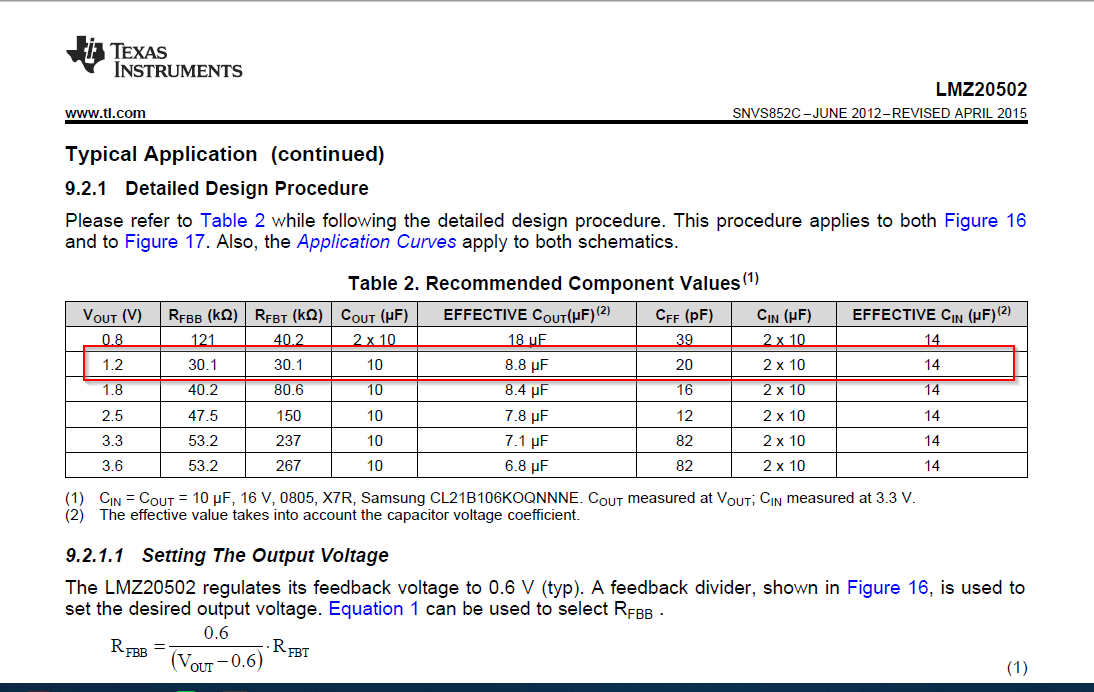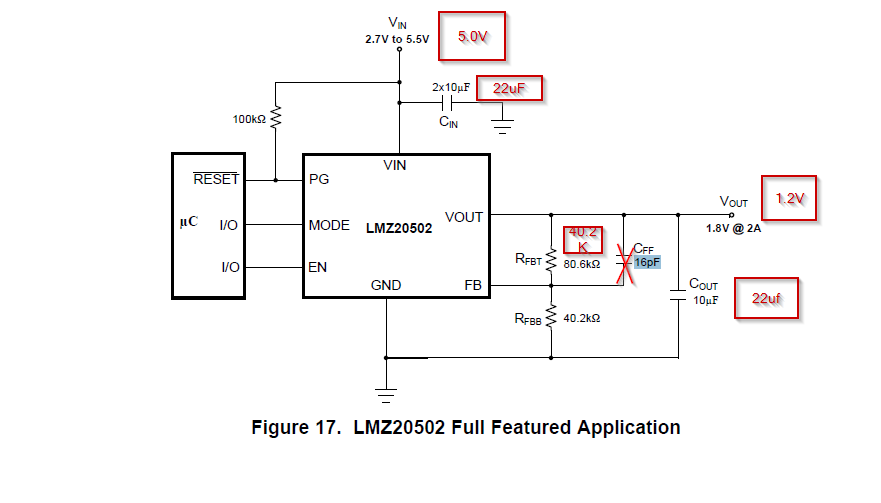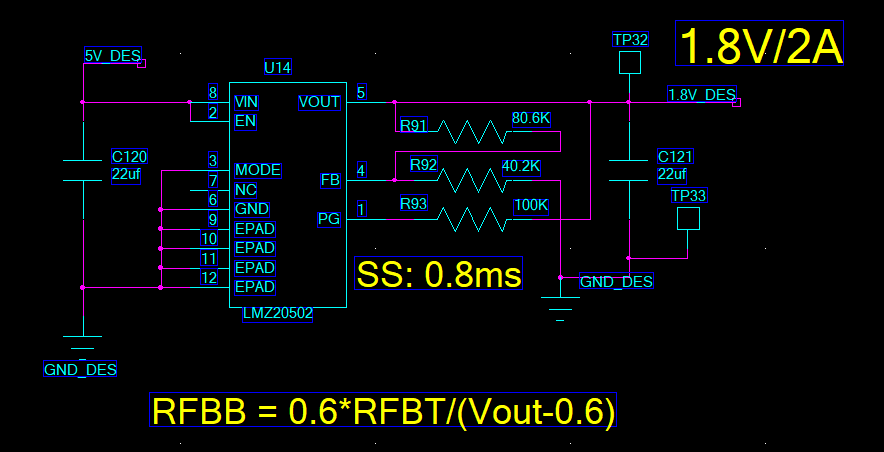Other Parts Discussed in Thread: TPS82084, ,
Dear Sir,
In fact I used TPS82084 in my previous design, it work well .because it cannot be bought in stock recently, I have to use LM20502 instead. but I forgot add Cff in my design. the fig is just like this:
Vin is 5V, Cin and Cout is 22uf, both of Rfbt and Rfbb are 40.2K. Vout should be 1.2V , but Cff is forgot to place.
I measure the Vout, about 0.89 V
So, I have some question:
1: Cff is necessary for this LMZ20502 usage? the real output is about 0.89V, it is so smaller than 1.2V expected. can this Cff impact on it?
2: Can 47pf cap be used ? the suggested value is 20 pF。
3. Cout is 22uf, the suggested value is 10uF, can 22uF be used for Cout?
Best regards.






